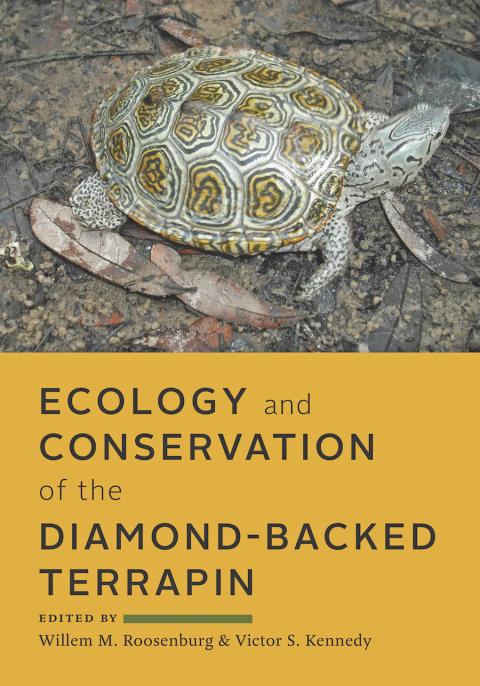Ecologist Vic Kennedy offers baselines for abundance in Chesapeake Bay and a survey of the diamond-backed terrapin
CAMBRIDGE, MD (January 9, 2019)—Once described as an immense protein factory, the Chesapeake Bay—along with its fisheries and waterfowl harvests—has changed radically over the past 150 years. A new book by University of Maryland Center for Environmental Science Professor Emeritus Victor Kennedy chronicles the abundance that once characterized the Chesapeake Bay to help provide a clear historical reference point, or baseline, for restoration.

Shifting Baselines in the Chesapeake Bay brings together more than 40 years studying the ecological processes in the Chesapeake Bay to examine the problem of shifting baselines for one of the most productive aquatic resources in the world. From sturgeon to shad, blue crabs to bivalves, and terrapins to waterfowl, Kennedy helps readers to understand the remarkable extent of the Bay’s natural resources in the past so that we can begin to understand what has changed and why.
“I assembled this history to celebrate the bygone ecological wealth of the Bay and to help readers understand the Bay’s potential for restoration, even if we cannot completely re-establish the numbers of fish, terrapins, and waterfowl that once supported great economic wealth for harvesters and processors,” said University of Maryland Center for Environmental Science Professor Emeritus Vic Kennedy. “With an understanding of the Bay’s past richness, perhaps we can set ambitious restoration goals for this once-renowned protein factory.”
Beginning with the colonial period and continuing through the 20th century, he gathers an unparalleled collection of scientific resources and eyewitness reports by colonists, fishers, managers, scientists, and newspaper reporters to create a comprehensive examination of the Chesapeake’s environmental history. Such knowledge can help illustrate the Bay’s potential fertility and stimulate efforts to restore this pivotal maritime system’s ecological health and productivity.

In Ecology and Conservation of the Diamond-backed Terrapin, Kennedy joins leading terrapin researcher Willem M. Roosenburg to bring together a group of expert scientists to summarize our current understanding of terrapin biology, physiology, behavior, and conservation efforts.
Once so numerous that people reportedly grew tired of eating them, diamond-backed terrapins are greatly reduced in numbers today and have become an icon of salt marsh conservation. Considerably diminished in some areas and struggling to survive, this distinctive brackish water turtle is the focus of intense conservation efforts.
The definitive volume on this important American reptile, Ecology and Conservation of the Diamond-backed Terrapin provides pivotal information for estuarine and turtle biologists, terrapin enthusiasts, natural historians, educators, conservationists, resource managers, and students.
Kennedy has been performing ecological research in Chesapeake Bay and teaching graduate students for more than 40 years. He is also a coeditor of The Eastern Oyster: Crassostrea virginica, and The Blue Crab: Callinectes sapidus.
Shifting Baselines in the Chesapeake Bay and Ecology and Conservation of the Diamond-backed Terrapin are available through Johns Hopkins University Press.
UNIVERSITY OF MARYLAND CENTER FOR ENVIRONMENTAL SCIENCE
The University of Maryland Center for Environmental Science leads the way toward better management of Maryland’s natural resources and the protection and restoration of the Chesapeake Bay. From a network of laboratories located across the state, UMCES scientists provide sound evidence and advice to help state and national leaders manage the environment, and prepare future scientists to meet the global challenges of the 21st century. www.umces.edu
# # #

